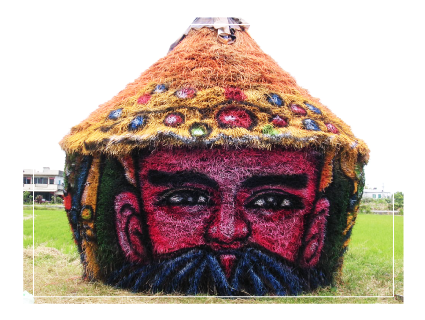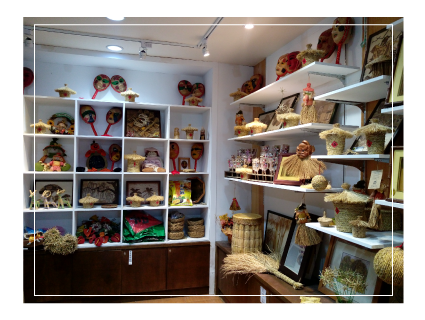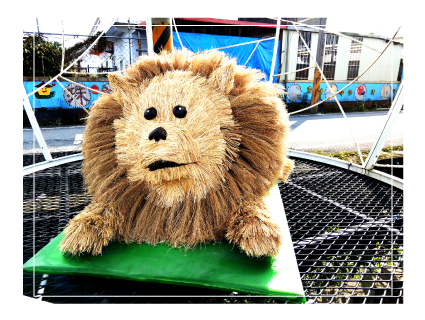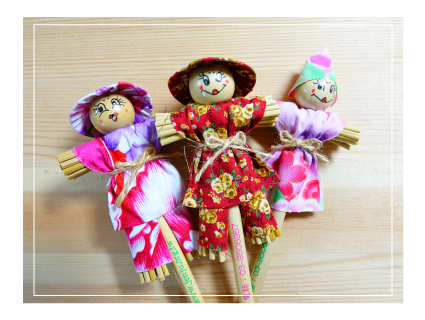Most of the land in the Pearl Community is rice paddies (136 hectares). Therefore, straw has become the main by-product of the community. The Pearl Community promoted making crafts out of them during the resurgance of community development in 2000. We can see many creative cultural products made of rice straw in the Community, including straw-stake building activity by thousands of people, and painting 21 straw stacks, which has become land art. What’s more, the 7-meter high straw stack converted into a god statue became a landmark in the Pearl Community. Displaying a Straw Dragon during New Year is also a unique New Year activity, and has been invited to exhibit in the Presidential square three times.
There are all types of straw crafts, such as the straw painting, straw masks, straw brooms, and straw knitting in the Straw Craft Museum. Besides exhibitions, it also provides many hands-on activities, like loach catching, searching for clams, making popcorn in a rice paddy, kiln activity, bike riding, and experiencing making rice-based products like rice cake, mocha, tangyuan, and other items.
The straw painting is made by using the characteristics of different parts of straw through the following steps: tailoring, crashing, exposing to sunlight, burning, and putting together. The earliest straw paintings were colorless and the topic mainly centered on rural landscapes and humanities. Later, more kinds of pigments and skills were applied to the paintings. Straw as a particular medium fully expresses the rural atmosphere and helps artists produce a special effect which conventional medium fails to bring. So far, the exhibition of straw crafts includes straw painting, straw masks, straw windmills, a small straw rocking horse, and other hands-on activities. The craft museum is not open to the public. Visitors are required to make a reservation prior to their visit.
There are all types of straw crafts, such as the straw painting, straw masks, straw brooms, and straw knitting in the Straw Craft Museum. Besides exhibitions, it also provides many hands-on activities, like loach catching, searching for clams, making popcorn in a rice paddy, kiln activity, bike riding, and experiencing making rice-based products like rice cake, mocha, tangyuan, and other items.
The straw painting is made by using the characteristics of different parts of straw through the following steps: tailoring, crashing, exposing to sunlight, burning, and putting together. The earliest straw paintings were colorless and the topic mainly centered on rural landscapes and humanities. Later, more kinds of pigments and skills were applied to the paintings. Straw as a particular medium fully expresses the rural atmosphere and helps artists produce a special effect which conventional medium fails to bring. So far, the exhibition of straw crafts includes straw painting, straw masks, straw windmills, a small straw rocking horse, and other hands-on activities. The craft museum is not open to the public. Visitors are required to make a reservation prior to their visit.
館舍名稱:稻草工藝館
開放時間:早上8:00~下午5:00
休館日:週一休館
票價:免費參觀
導覽:50元/人,若人數較多請事先以電話與館舍確認
Email:jenju@ms39.hinet.net
連絡電話:(03)9600721,9500904
地址:宜蘭縣冬山鄉幸福二路73號







